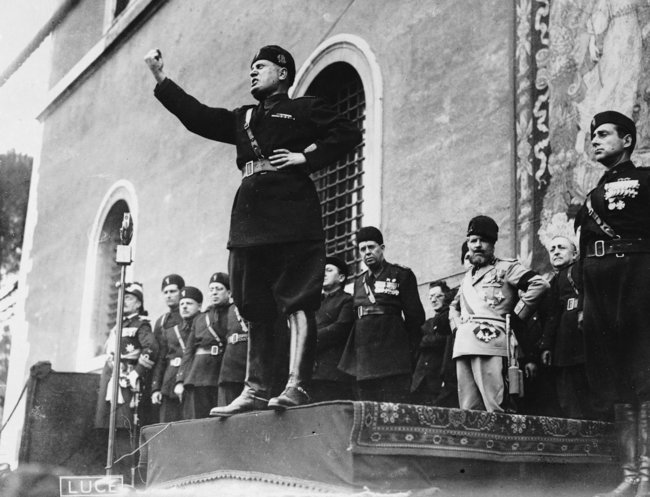
At Open Democracy, historian Paul Jackson traces the development of the concept of “political religion,” first coined in the twentieth century by scholars of fascism. The basic idea is that totalitarian regimes like fascist Italy and Soviet Russia promulgated political ideologies that shared many qualities with religion, such as the importance of symbols and ritual, and the belief in a higher purpose. As Jackson explains, this religious-like politics was especially appealing to populations that had undergone increasing secularization. Check out an excerpt from the piece below.
Fascist Italy and Nazi Germany, as well as the Soviet Union, were exemplars of its more hard-line variant, political religion. Such states, at least in principle, rejected pluralism and instead sought a monopoly on belief and the total commitment from those who lived within them. For Emilio Gentile, there are several key features that characterise a political religion. They are founded around a sacralised ideal of an essentially secular identity. Some political religions, such as fascist ones, are based on national identity and race; others, like communism, are based on class. Though ideas of race, nation and class are radically different, for Gentile they could all be used to evoke a sense of a collective identity deemed to be superior to the individual, and so people are morally obliged to carry out what was best for the collective, not themselves. Political religions are diametrically opposed to liberal notions of individualism, in other words.
There is also a utopian vision at the core of a political religion, giving them a sense of messianic mission, binding leaders and followers together in a shared project. Finally, to express this, they develop new rituals that make a leading individual the personification of the political religion’s mission, and a wider mythology that allows societies to engage in activities that express their collective belief in the sacred cause espoused by the new faith.
Image of Mussolini via Time.